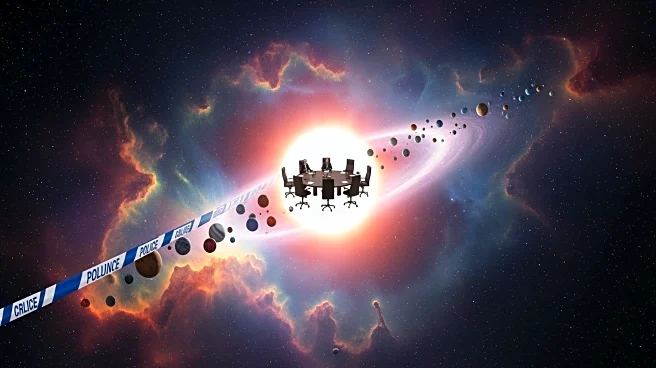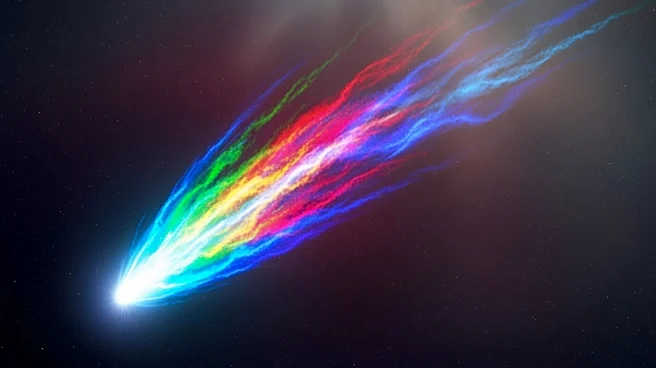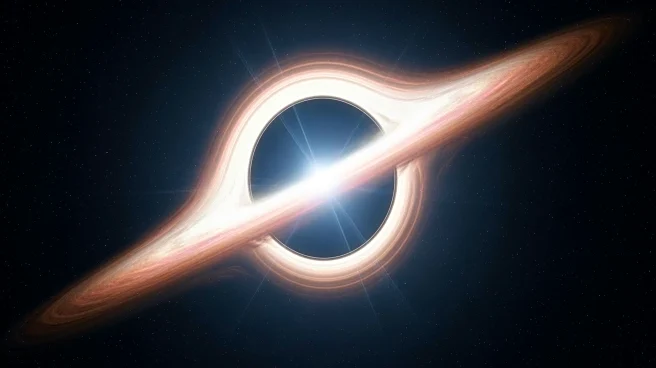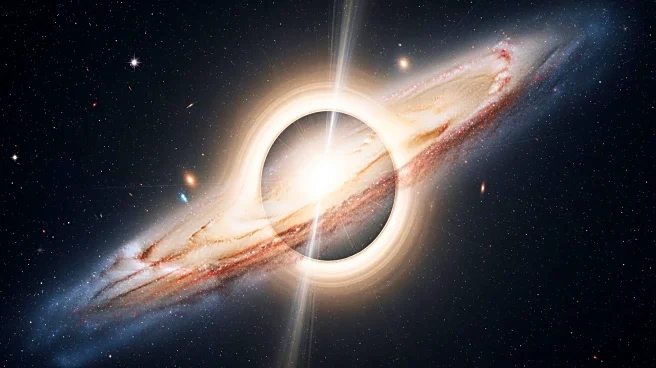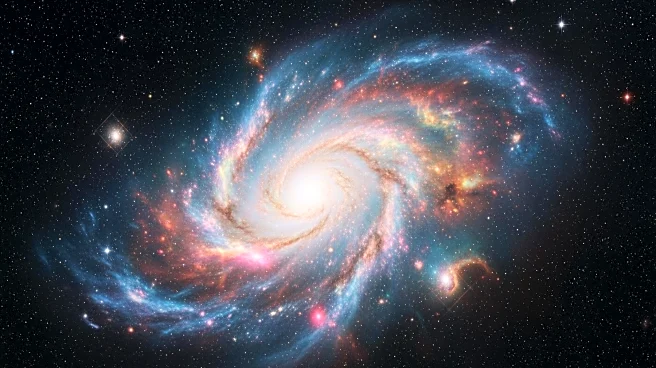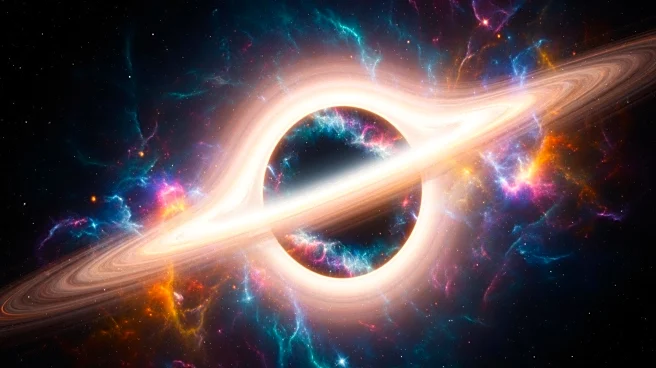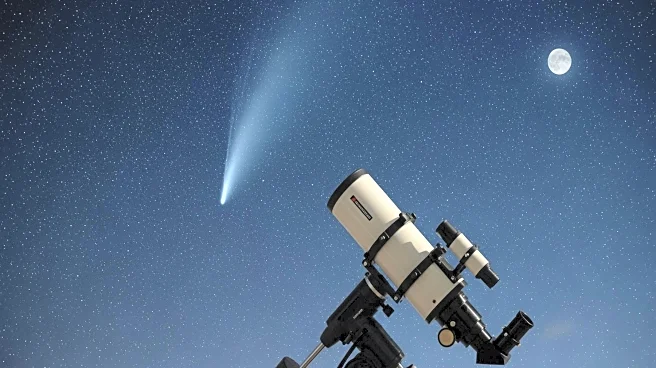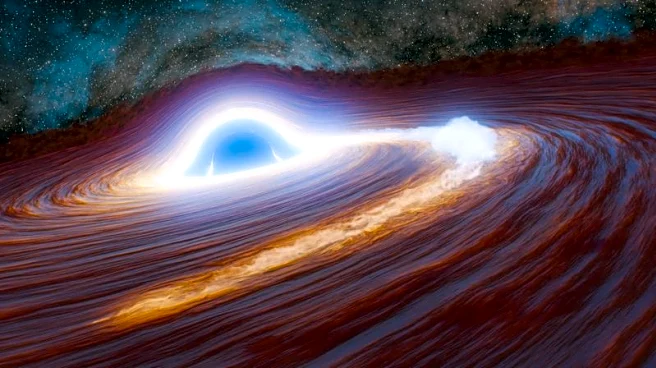What's Happening?
A study conducted by astronomers from University College London and the University of Warwick has revealed that aging stars may be consuming the giant planets orbiting them. As stars like the Sun exhaust
their hydrogen fuel, they expand into red giants, potentially engulfing nearby planets. The research analyzed nearly half a million stars in this evolutionary stage, identifying 130 planets and candidates, including 33 new discoveries. The findings suggest that planets are less common around stars that have expanded into red giants, indicating possible destruction.
Why It's Important?
This discovery provides crucial insights into the life cycle of stars and the fate of planetary systems. Understanding how stars interact with their planets as they evolve can inform predictions about the future of our solar system. The research highlights the potential for planets to be destroyed as their host stars expand, a process that could eventually affect Earth. These findings could influence future astronomical studies and the search for exoplanets, as they offer a clearer picture of planetary survival in evolving star systems.
What's Next?
The research team plans to further investigate the masses of the identified planets to confirm their status and understand the mechanisms driving their destruction. This will involve measuring the gravitational effects on host stars to determine planetary masses. The study's continuation could refine models of stellar evolution and planetary dynamics, offering more detailed predictions about the fate of planets in similar systems. The findings may also prompt further exploration of how these processes affect the potential for life on planets in evolving star systems.
